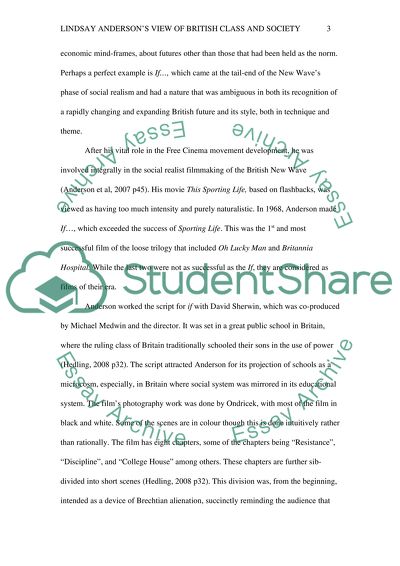Cite this document
(“Examine the view of British Class and society that Lindsay Anderson Essay”, n.d.)
Examine the view of British Class and society that Lindsay Anderson Essay. Retrieved from https://studentshare.org/visual-arts-film-studies/1595186-examine-the-view-of-british-class-and-society-that-lindsay-anderson-provides-in-the-films-if1968-o-lucky-man-1973-and-britannia-hospital-1982
Examine the view of British Class and society that Lindsay Anderson Essay. Retrieved from https://studentshare.org/visual-arts-film-studies/1595186-examine-the-view-of-british-class-and-society-that-lindsay-anderson-provides-in-the-films-if1968-o-lucky-man-1973-and-britannia-hospital-1982
(Examine the View of British Class and Society That Lindsay Anderson Essay)
Examine the View of British Class and Society That Lindsay Anderson Essay. https://studentshare.org/visual-arts-film-studies/1595186-examine-the-view-of-british-class-and-society-that-lindsay-anderson-provides-in-the-films-if1968-o-lucky-man-1973-and-britannia-hospital-1982.
Examine the View of British Class and Society That Lindsay Anderson Essay. https://studentshare.org/visual-arts-film-studies/1595186-examine-the-view-of-british-class-and-society-that-lindsay-anderson-provides-in-the-films-if1968-o-lucky-man-1973-and-britannia-hospital-1982.
“Examine the View of British Class and Society That Lindsay Anderson Essay”, n.d. https://studentshare.org/visual-arts-film-studies/1595186-examine-the-view-of-british-class-and-society-that-lindsay-anderson-provides-in-the-films-if1968-o-lucky-man-1973-and-britannia-hospital-1982.


